Opensets
 Getting started
Getting started
This article describes openset promotion functionality, which allows users to create a web page with set of products, where the customer is able to select desired products from the list, and add them to the cart as a set.
We distinguish three types of opensets – “Normal”, “DIY” and “DIY catalog price”, which are described in the following chapters.
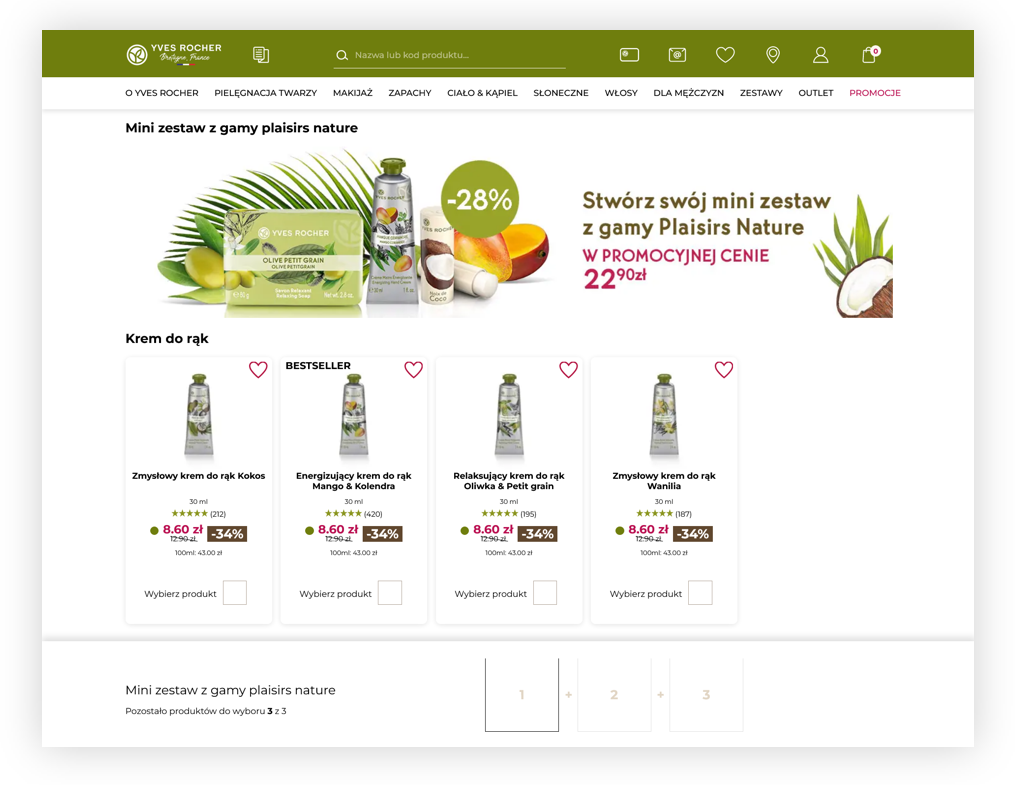 |
|
Visualization of the DIY openset |
Table of contents
 Creating an Openset
Creating an Openset
In order to create an Openset, in the administration panel navigate to the Admin panel > Promotions > Opensets / list section and click Add button (1), that will redirect you to the Openset creation page.
 |
|
Visualization of the opensets / list tab |
Creating a normal openset (tab “General”)
Below you will find a description of all parameters needed to create an Openset.
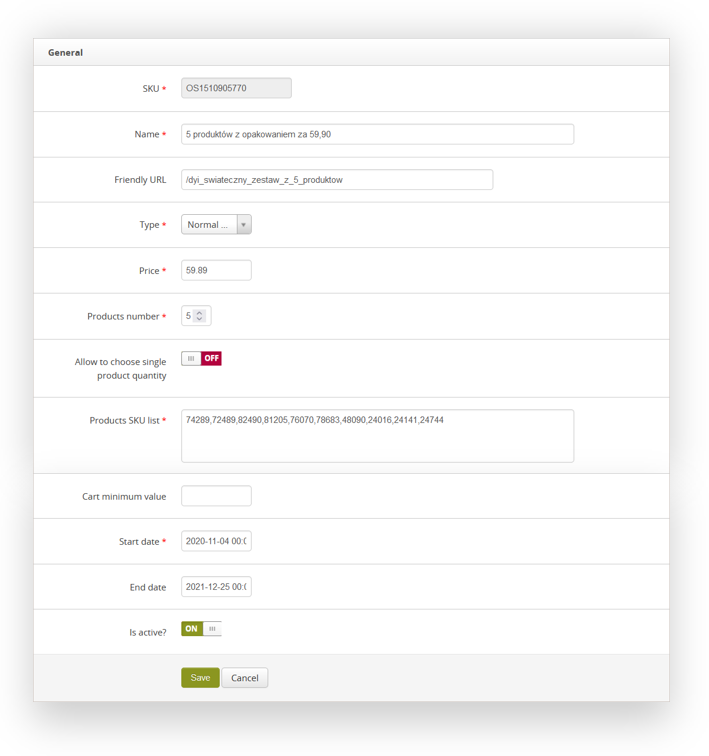 |
|
Visualization of the normal openset creation. |
- SKU – automatically generated unique openset product code.
- Name – displayed name of the openset. The value is displayed on the e-commerce platform for the customer.
- Friendly URL – URL address where openset is located.
- Type – type of openset.
- Price – Target price for the created set. The superior prices of products placed in the openset (Products SKU list field) are not taken into account.
- Products number - number of products you can choose from the available list (Products SKU list field). After selecting 3 products, you will receive a popup with the possibility of adding the chosen set to the cart.
- Allow to choose single product quantity - A switch that enables customers to select more units than 1 of the same product, instead of the need to select different products.
- Products SKU list - list of products (SKU product code). Must be separated by comma.
- Cart minimum value - archive field, currently not used.
- Start date - date from which the openset will be visible on the e-commerce platform.
- End date - date from which openset will not be visible on the e-commerce platform.
- Is active - a switch that determines whether the openset is active or not on the e-commerce platform.
After filling in all the above parameters, select Save button to save the changes or Cancel button to cancel adding an Openset.
![]() RememberIn order for the element to be fully activated and visible on the e-commerce platform, remember to activate the openset in the Altshops module.
RememberIn order for the element to be fully activated and visible on the e-commerce platform, remember to activate the openset in the Altshops module.
Below you’ll find the visualization of normal openset on the e-shop website.
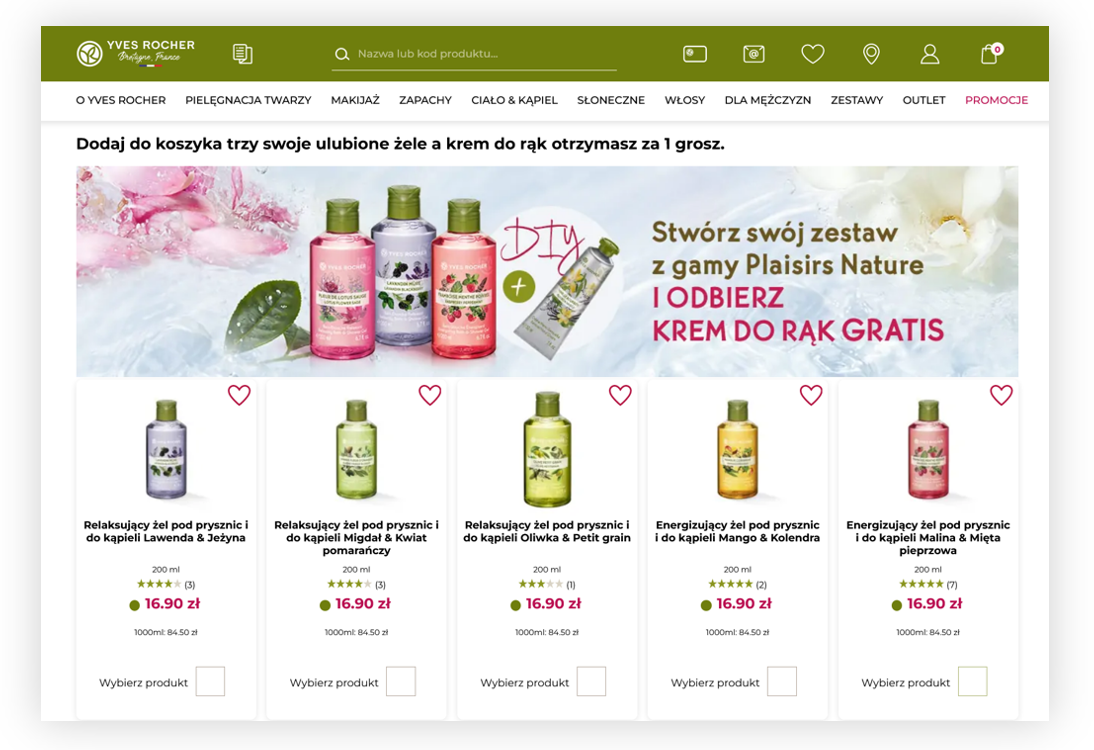 |
|
Visualization of the normal openset on desktop |
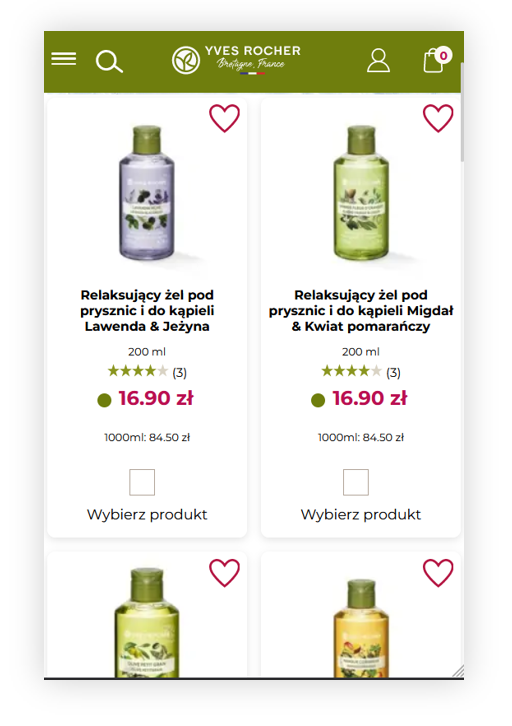 |
|
Visualization of the normal openset on mobile |
Creating a normal openset (tab “CMS blocks”)
CMS Blocks tab allows us to see header CMS blocks (automatically created by the application) that will be used by the openset.
CMS block is required to have openset ID in its name, for example:
openset / header / 47 (where 47 is openset ID)
We can press “add” button, which will create a new CMS block for us with the appropriate block name.
 |
|
Visualization of the CMS blocks tab |
![]() Remember The header of the openset cannot be wider than 1248px.
Remember The header of the openset cannot be wider than 1248px.
Section CMS block is the same for Normal as well as DIY opensets. And it looks as in the example displayed below (1).
 |
|
Visualization of the openset CMS block |
Creating a DIY or DIY catalog prices openset
The process of creating a DIY opener is identical to a Normal type openset. The only differences between normal and DIY sets are:
- Type field, where we have to indicate DIY or DIY catalog prices openset.
- Product SKU list construction where we have a JSON record.
- Product price value indicated in the JSON is superior value in relation to Price. In case of DIY catalog prices openset the price value takes the catalog prices of the product instead of promotion prices.
- Products number - means the number of steps of which openset DIY is composed of.
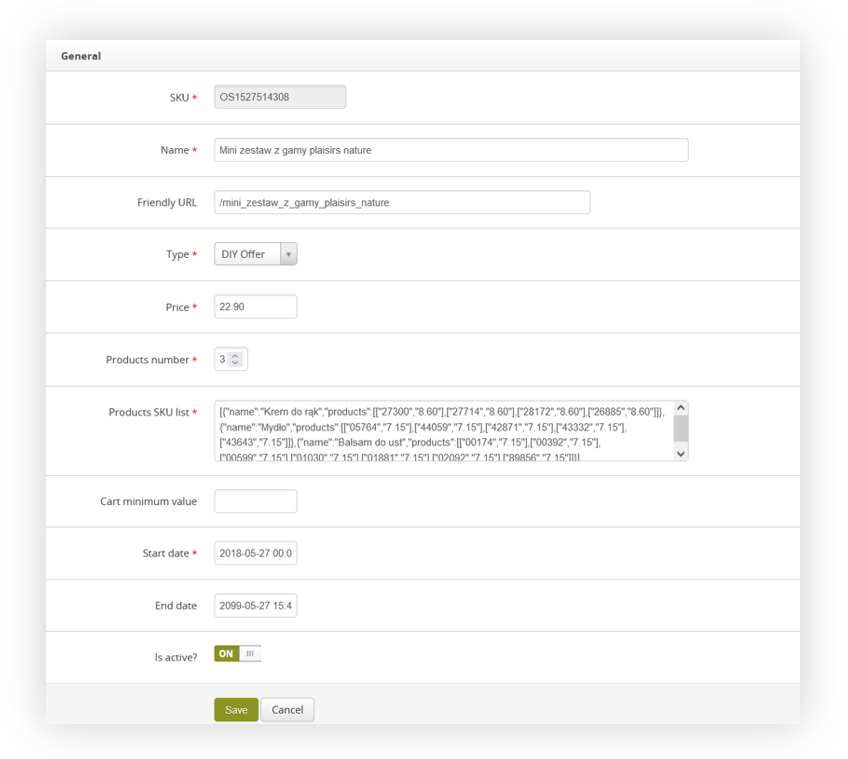 |
|
Visualization of the DIY openset in the admin panel |
JSON construction
Below you can find an example JSON that can be used in the openset
[{"name":"Krem do rąk","products":[["27300","8.60"],["27714","8.60"],["28172","8.60"],["26885","8.60"]]},
{"name":"Mydło","products":[["05764","7.15"],["44059","7.15"],["42871","7.15"],["43332","7.15"],["43643","7.15"]]},
{"name":"Balsam do ust","products":[["00174","7.15"],["00392","7.15"],["00599","7.15"],["01030","7.15"],["01881","7.15"],["02092","7.15"],["89856","7.15"]]}]
- Name parameter sets the name of the category. (1)
- Products array sets the product SKU and product price (2) in the set name .
The number of categories (3) is taken from the Products number field of the openset.
Below you’ll find the visualization of DIY openset on e-shop website.
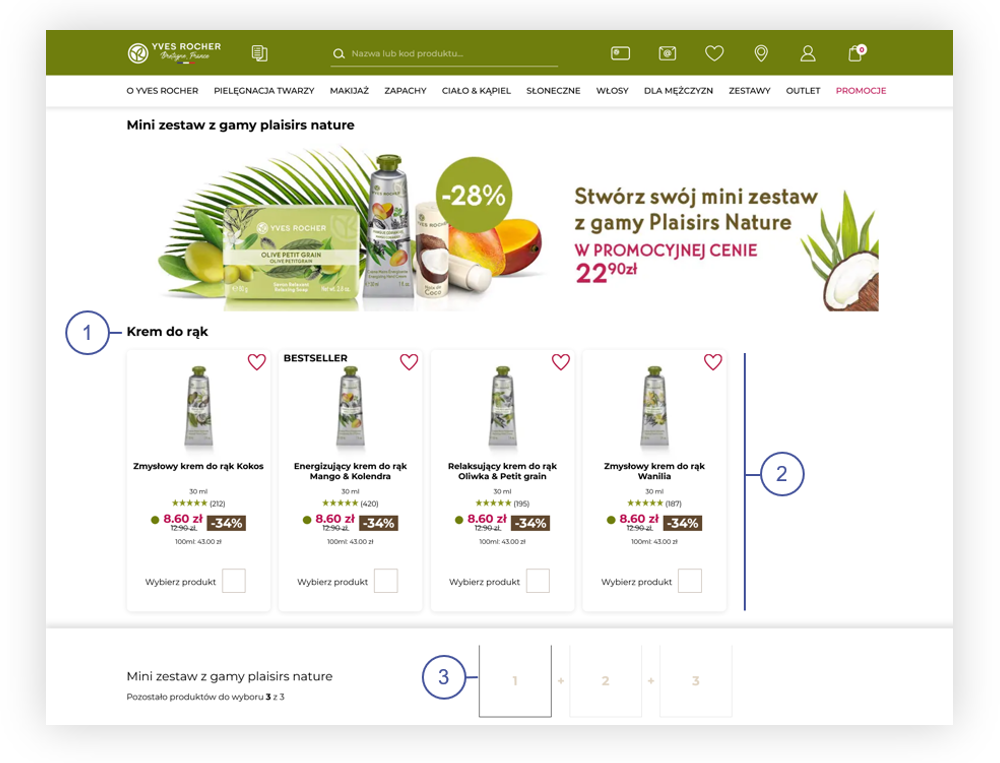 |
|
Visualization of the DIY openset |
